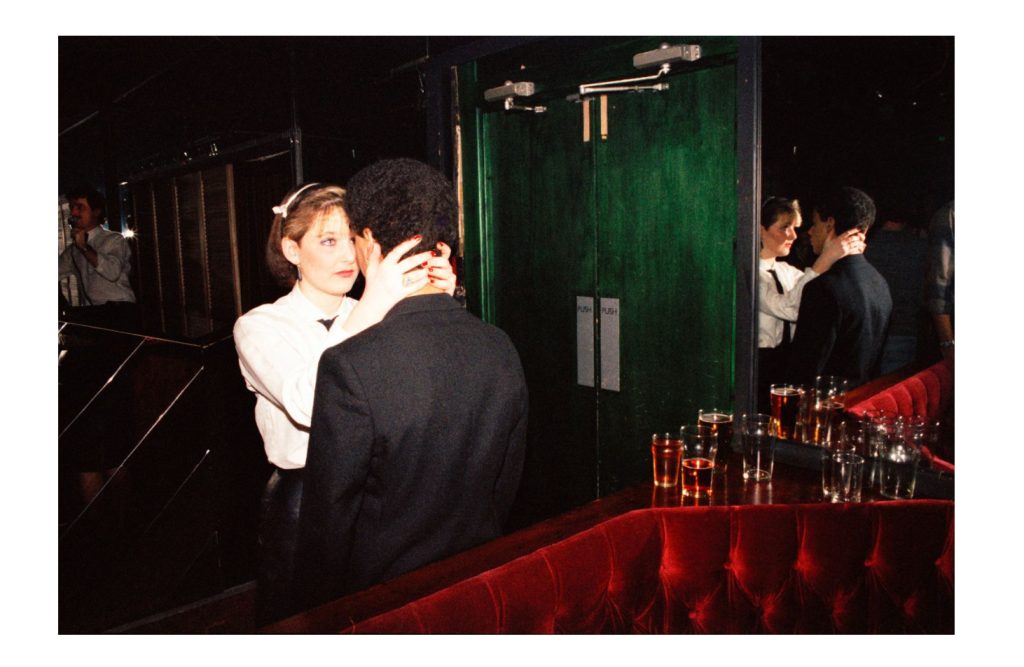
From the Looking for Love series – screenshot from Tom Wood Archive
As well as photographs displayed on the gallery walls, in each of the exhibition rooms, there is a slideshow of photos taken during each decade of Tom Wood’s career. This is the experience at ‘Photie Man: 50 Years of Tom Wood’ at Walker Gallery, Liverpool.
Two things jump out. One is just how prolific his output is – he has produced over a million images. The other is that some of them are compelling, some are out of focus and some are just not great. But they speak to Wood’s creative process, revealing a single-minded commitment to the artistic practice of photography and an obsessive, almost compulsive search for that ‘image with presence’ that lies latent in the world around him.
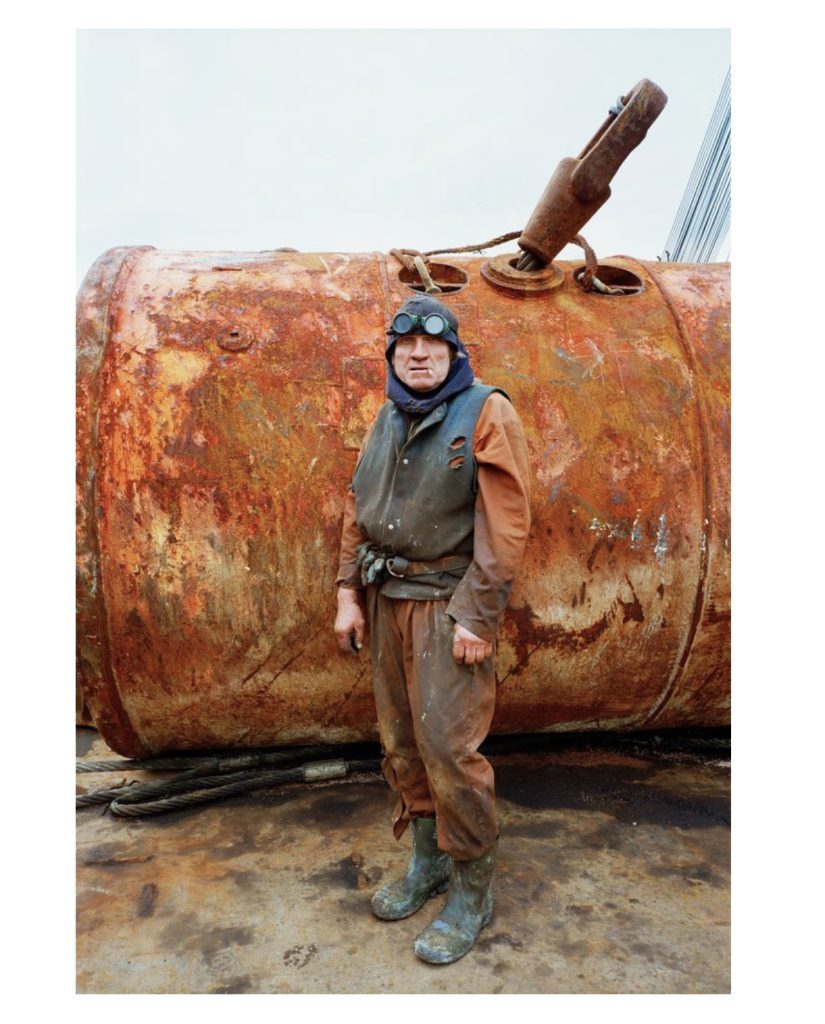
Mad Max – screenshot from Tom Wood Archive
Tom Wood lived in Liverpool from 1978 to 2003. His ubiquitous presence with a camera on the streets, clubs and workplaces of New Brighton, where he lived, earned him the nickname ‘Photie Man’. Organised in decades, with smaller sub-themed groupings of photos, the majority of this major survey of Wood’s 50 year career are of people and places in Liverpool with photographs from his Irish and Welsh body of work.
Wood has no set style. He recorded the working lives of the men at Cammell Laird shipyard between 1993 and 1996 when they were fighting to save it from closure. Portraits sit next to documentary style photos. The portrait of a welder, ‘Mad Max’ is heroic in size and saturated with colour; his dirty orange overalls blend in with the huge rusting tank behind him. He confronts you with his gaze, ciggie perched on the side of his mouth. It is accompanied by photos documenting absence – the lathe room, cluttered but empty, a message scrawled on some tape on the wall ‘I don’t know where Sammy is (try the shop)’, and presence – men lounging in a break room, walls covered in pictures of topless women. Wood has spoken of how he can photograph different subjects in different ways using different formats – on the bus on the way to Cammell Laird, he used a small 35mm camera, in Cammell Laird, a large format camera with a tripod, for his landscape work, a specialist panoramic camera. Different photographic outcomes, but sometimes the same people who lived in the local area.
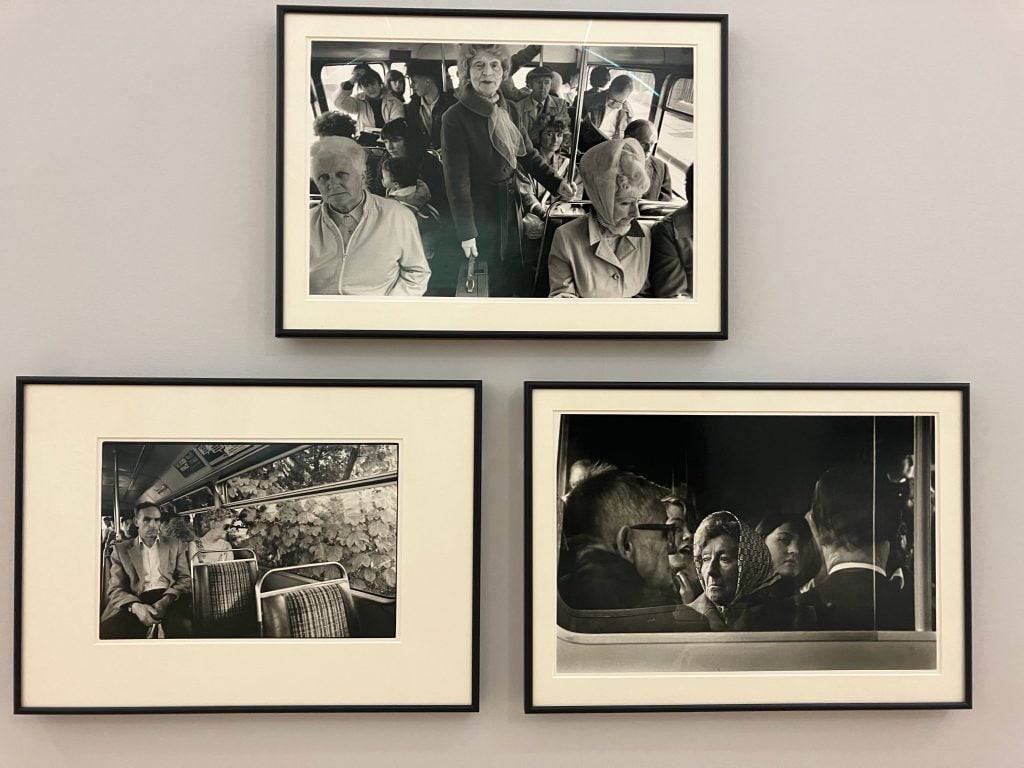
Selection from All Zones Off Peak series. Source: Joanie Magill
Wood’s projects spanned years, sometimes decades, often running in parallel. ‘All Zones Off Peak’, his bus series, is a tenuous thread that ties some of them together. Wood travelled the length and breadth of Merseyside on the bus – to Great Homer Street Market where he photographed women shoppers before he went to Anfield where he would photograph (mostly) men outside the football matches, or to Rainhill Psychiatric Hospital where he was commissioned to document patients in institutional care, or to Cammell Laird. Wood has spoken of how this overlapping of projects is how he keeps his process creative – the chaos is where the good stuff would come. Shot over 20 years, ‘All Zones Off Peak’ series is the output of over 3,000 rolls of film. People standing at bus stops, crowds hustling onto a bus after a day at the seaside, passengers on crowded and empty buses. The banality of everyday life is transmuted into compelling images capturing social change.
In the glare of a flash bulb, Wood documented an era at the Chelsea Reach Nightclub in New Brighton. The photographs in the ‘Looking for Love’ series capture the courtship rituals of a Saturday night in the eighties – the throng of bodies, hands groping, eyes glazed, arms wrapped around a stranger or a lover swaying to a slow dance. A cinematic photo of a young woman with a young man stands out amongst the group. Her hands are wrapped around the back of his neck as she stares intensely into his eyes, the muted tones of her surroundings making the red of her nails and the white of her shirt the focus of the photograph.
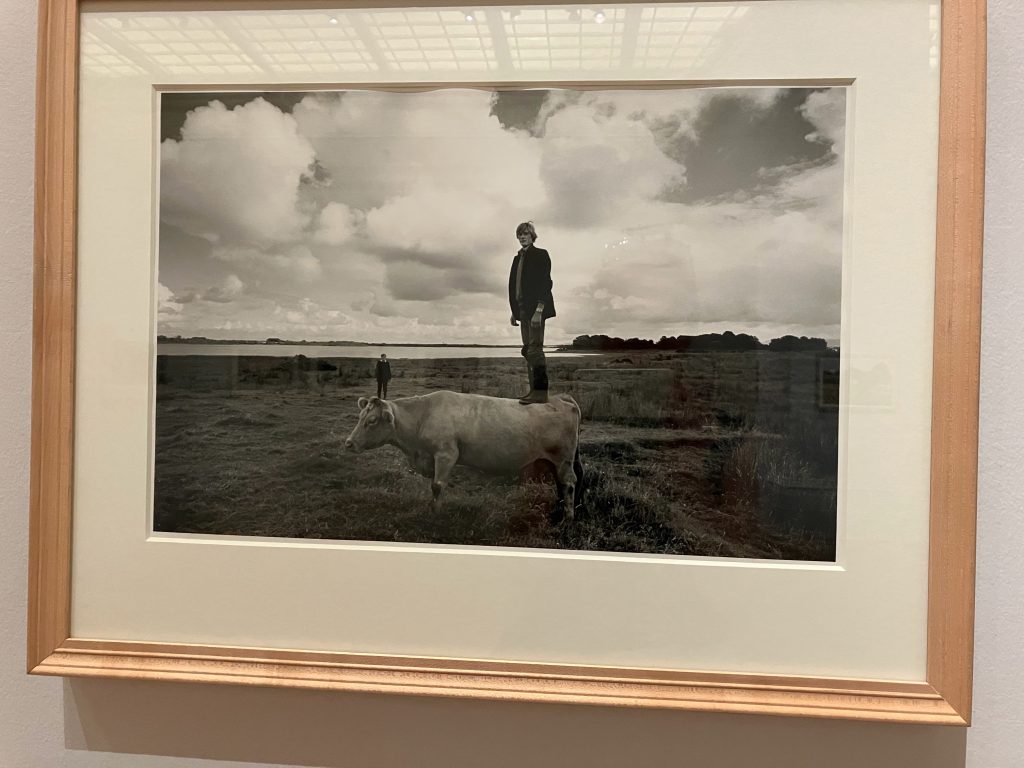
Alan, Charlie and Grainne (photographed 1986). Source: Joanie Magill
A display cabinet houses albums of found photos. One is called ‘Sisters’, the other ‘Soldiers’. Wood has been a compulsive collector of images since childhood – photos and postcards of anonymous people and landscapes. Collecting images is how he unconsciously developed his aesthetic, studying how and why some images worked. The influence is revealed and places the group of photos titled, ‘Mothers, Daughters, Sisters’ in context. Vintage found photos are placed among the portraits of women, all taken at different times and places, but related to one another.
Parallel to the people and places of Merseyside is a body of work documenting his annual ‘Pilgrimage’ back to County Mayo where he was born. In the early fifties, Wood’s father, a Protestant, married a Catholic. Her family stopped speaking to her and the church froze her out forcing the family to move to England. Through portraits, landscapes and documentary photos, Wood documents his relationship with the West of Ireland as it has evolved from a backwater in the seventies dogged by emigration, to the Celtic Tiger boom era of the 1990s, to the present. Images of family and friends who are no longer alive record a way of life that no longer exists, set in the timelessness of the landscape.
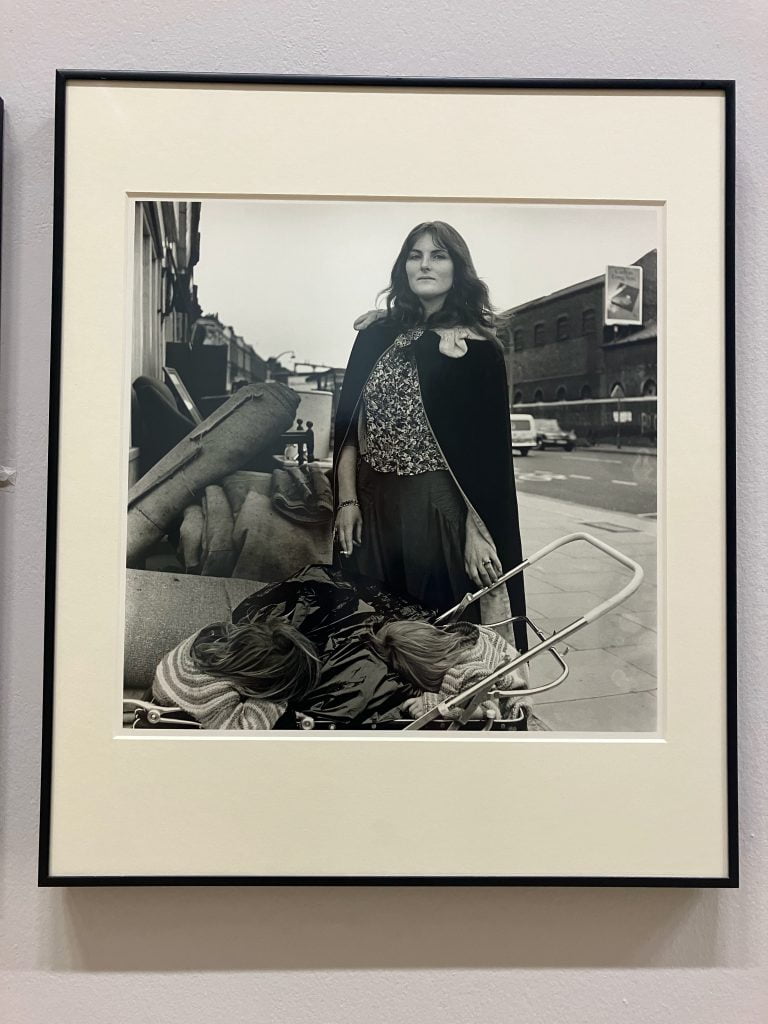
Bat wing cape (photographed 1974). Source: Joanie Magill
Wood’s work is unique because of the intimacy he developed with his subject matter and the respect he has for the people he photographs. But despite the familiarity that develops over long term projects, the work is never stale; he finds something new to say. Photie Man shines because the exhibition reveals as much about Wood’s creative process and obsession with the practice and materiality of photography as it does about the people and places of Merseyside, Wales and Ireland that formed his subject matter over the decades.
***
Catch the exhibition at Walker Gallery, showing until January 2024!
Filed under: Art & Photography
Tagged with: cameras 35mm, collection, exhibition, family, HOME, liverpool, Merseyside, nightclubs, people, photie man, photography, photos, the walker gallery, Tom Wood
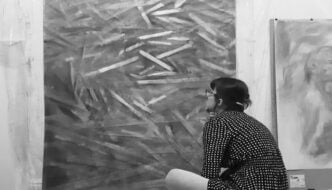

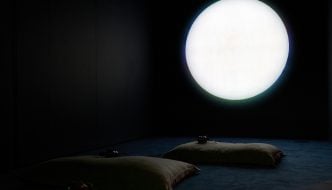
Comments